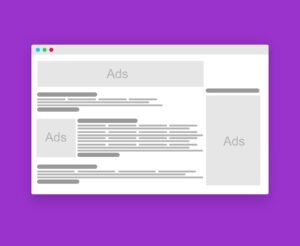
Micro-moments are everywhere. Those split seconds when someone reaches for their phone to check a fact, look up a product, or compare prices. These tiny bursts of intent happen constantly, and they’re changing how people make decisions.
Now more than ever, attention is scattered. People scroll, search, and swipe without a second thought. Traditional campaigns that wait for attention to come to them are missing the point. The brands winning today aren’t just visible. They’re present at exactly the right time. And that’s where ad networks come in.
They give advertisers the ability to be everywhere that matters, but only when it matters. With precision and scale working together, you can meet your audience in real-time, not just in theory.
What Counts as a Micro-Moment?
Not every online interaction qualifies. Micro-moments are high-intent and often unplanned. They’re driven by curiosity, urgency, or a specific need.
Some common examples:
- I-want-to-know moments – Looking for quick answers or more info
- I-want-to-go moments – Searching for nearby options
- I-want-to-do moments – Figuring out how to do something right now
- I-want-to-buy moments – Ready to make a purchase, comparing options
These aren’t linear steps in a funnel. They pop up spontaneously and often lead to quick decisions. Capturing them isn’t about pushing harder. It’s about showing up smarter.
Why Ad Networks Work for This
You need reach. But you also need relevance. Ad networks for advertisers give you both. They combine data, audience signals, and automation to show ads across multiple websites, apps, and platforms. But it’s not just a volume game. Done well, it becomes a way to match real human behavior with the right message at the right time.
Rather than betting on one platform or format, ad networks let advertisers cast a wider, more intelligent net.
Here’s why that matters:
- Real-time bidding – Ads are served in milliseconds, based on who’s watching
- Cross-device tracking – User behavior is followed across phone, tablet, and desktop
- Behavioral targeting – Past actions, searches, and interests shape what gets shown
- Dynamic creative – Ads can adjust based on user context or location
This turns your campaign into something responsive. It’s not just showing your brand. It’s reacting to real-time signals.
Scale Alone Isn’t Enough
Blanket coverage won’t help if you’re not meeting the right intent. Volume without precision leads to wasted spend and missed moments.
The advertisers that stand out are not just flooding inventory. They’re using advanced segmentation, layered targeting, and smarter testing to get granular.
Instead of aiming at a demographic, they’re targeting mindset. They know that someone looking up “best weekend getaways” on a Friday afternoon is much more valuable than a generic travel enthusiast. Timing, location, and behavior paint a more accurate picture than any broad persona ever could.
Key tactics used by smarter advertisers:
- Time-of-day bidding – Adjusting ad delivery to peak intent windows
- Geo-fencing – Triggering location-specific messages
- Sequential messaging – Moving users through a journey across different touchpoints
- Exclusion targeting – Avoiding audiences who have already converted or aren’t relevant
All of this is designed to reduce waste. But more importantly, it boosts relevance. Because when the message fits the moment, people notice.
What Precision Looks Like in Action
Imagine someone searching for “best laptop for design students” late at night on their phone. They’re not just browsing. They have intent. A smart advertiser using an ad network can recognize:
- The keyword’s urgency
- The device being used
- The late-night timing
- The past behavior tied to school-related content
From there, they can serve a highly relevant ad with specific value messaging, tailored for students. That same person might later search again on desktop the next day. Because of cross-device tracking, the advertiser can follow up with a retargeted message, this time offering a time-sensitive discount or comparison chart.
It’s not just one ad. It’s a connected experience that moves with the user.
Balancing Automation with Control
There’s no doubt automation plays a big role. Programmatic buying, AI-based optimization, and dynamic targeting all save time and boost efficiency.
But control still matters. Smart advertisers don’t just set and forget. They:
- Regularly test creative to avoid fatigue
- Monitor placement reports to weed out low-value inventory
- Use frequency caps to avoid overexposure
- Continuously refine audience segments based on performance
The best campaigns strike a balance between machine logic and human oversight. Automation does the heavy lifting. Strategy sets the direction.
Challenges Still Exist
With all the precision available, it’s easy to assume ad networks are foolproof. They’re not. Even smart campaigns can fall short if they lose sight of the user experience.
Here are some common missteps to avoid:
- Over-personalisation – Feels invasive rather than helpful
- Misaligned creative – Irrelevant or poorly timed messaging breaks trust
- Slow load times – Kills performance, especially on mobile
- Ignoring context – Serving product ads during serious or sensitive content
No targeting strategy can fix poor execution. The message still needs to resonate. The creative still needs to load quickly. And the placement still needs to make sense for the user.
6 Things the Best Advertisers Always Do
If there’s a pattern among top performers, it usually includes these habits:
- Prioritise speed – Both in page load and decision making
- Lean into mobile – Most micro-moments happen on the phone
- Optimise creative frequently – Test, update, rotate
- Target behavior, not just demographics – Actions speak louder than profiles
- Look beyond last-click – Understand full journey value
- Treat intent like a currency – The more precise the intent, the more valuable the moment
Precision at scale is only powerful when it’s aligned with real behavior. It’s not about being seen everywhere. It’s about showing up where it counts.
Final Thoughts: Micro-Moments Deserve Macro Strategy
It’s easy to chase volume, but the wins come from relevance. Ad networks give advertisers the chance to show up at exactly the right time. But without a smart strategy behind it, all that reach amounts to background noise.
The advertisers getting it right aren’t just buying impressions. They’re earning attention, one micro-moment at a time.
So the question isn’t how wide your reach is. It’s whether your message is ready when someone’s moment arrives.

